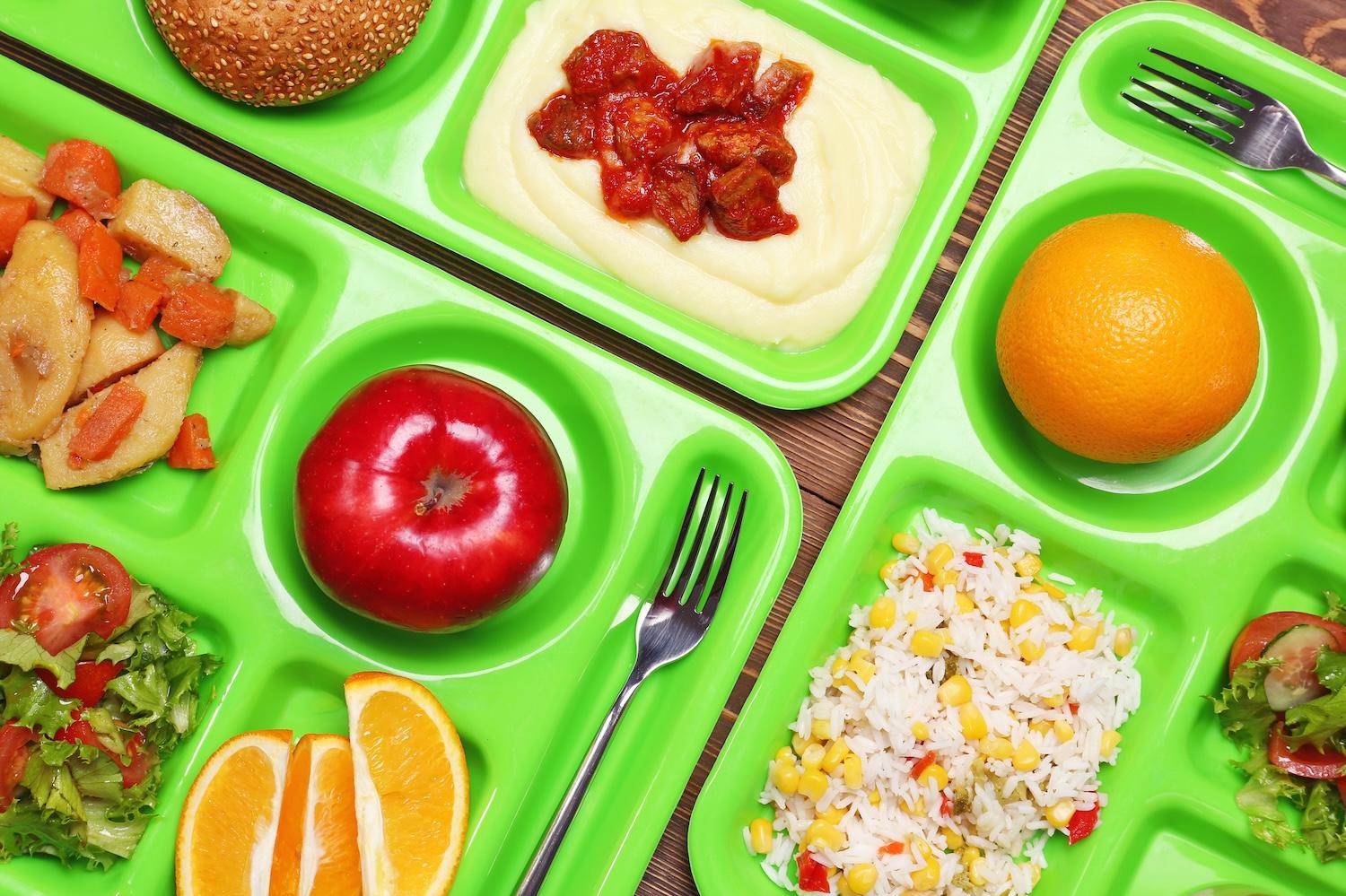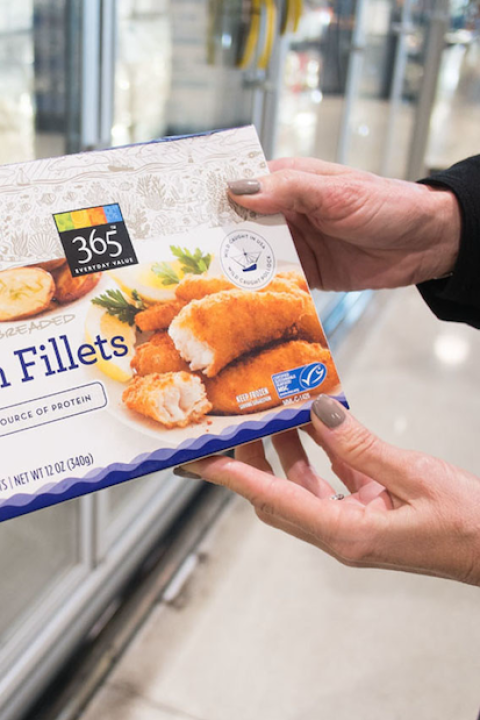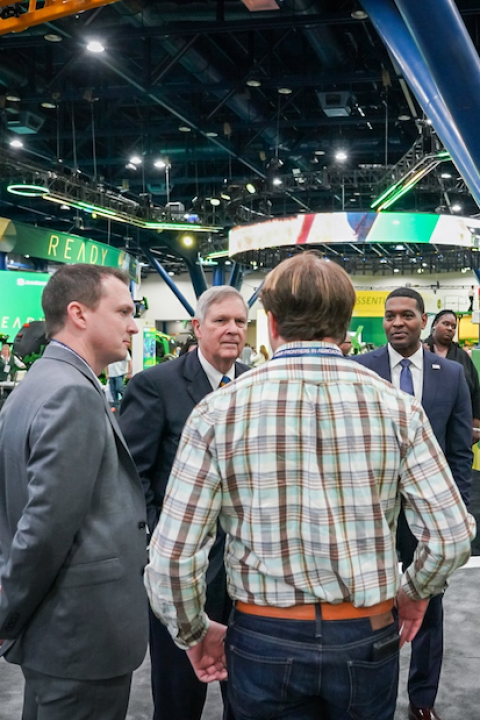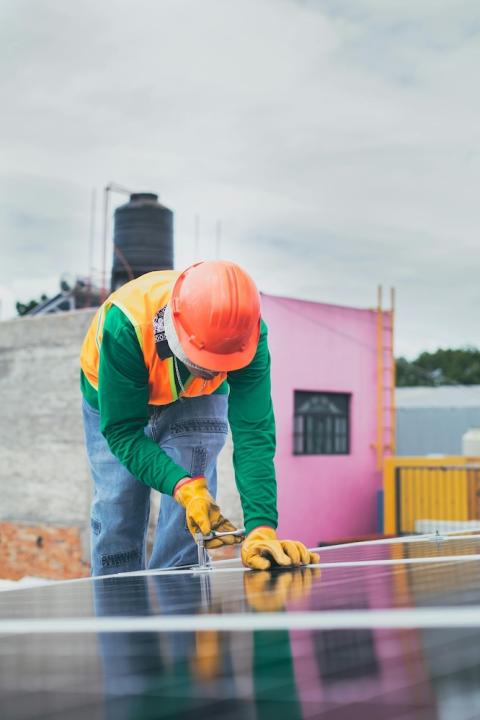
(Image: Africa Studio/Adobe Stock)
This story is part of an ongoing solutions journalism series focused on reuse systems, how they're used around the world, and what's holding them back from scaling further. Follow along with the series here.
"We want to find the barriers, or perceived barriers, to reuse and tackle them with data," said Crystal Dreisbach, CEO of Upstream, a nonprofit change agency working to accelerate reuse systems across North America.
The organization operates under a three-pillar theory of change: normalize reuse, expand the infrastructure that enables reuse systems, and ensure a favorable policy environment for these systems to thrive. The goal? "Accelerate reuse to become a widespread, cross-operable, shared, universal utility," Dreisbach said. "Just like trash and recycling, but better." To understand what these three steps mean in practice, look no further than the school lunchroom.
School lunchrooms: The ideal frontier in the future of reuse?
"So many school systems are still serving on Styrofoam with plastic forks every day," Dreisbach said. Until recently, the 56-school system in her hometown of Durham, North Carolina's fourth largest city with a population of 300,000, was one of them. Durham's public schools serve hot lunch to around 25,000 students daily, resulting in a minimum of 50,000 disposable items each day.
In partnership with the local nonprofit Don't Waste Durham, where Dreisbach previously served as CEO, the city's public school system is transitioning away from single-use lunch trays in favor of reusable alternatives.
The move not only reduces waste at Durham schools, but it also provides a hefty long-term contract for the pickup, wash and delivery services that form the backbone of the reuse economy. "It's part of the burgeoning new industry of reuse service, which is basically washing dishes," Dreisbach said. "It’s not rocket science."
While of course washing dishes is nothing new, making the transition from single-use can come with a high upfront cost for organizations like school systems. Many schools don't have the space for dishwashers and drying racks, which means they have to rely on third-party services. And whether they can wash in-house or not, they still have to invest in reusable trays and other serve-ware.
Schools, businesses and other organizations end up saving money in the long run by eliminating the ongoing cost of disposable products, but they have to get past the initial investment first. Fortunately, existing resources can help.
The nonprofit Plastic Free Restaurants, for example, covers up to 100 percent of the cost for schools, nonprofits and restaurants to switch to reusable serve-ware. Applicants simply send their receipts for recent disposable purchases and receive a subsidy for qualifying reusable replacements. "They're hoping to break down the barrier of that upfront cost," Dreisbach said.
Software from Upstream can also help organizations calculate the environmental impact of switching to reusables, as well as the long-term cost savings and the payoff date.
"It's a very different economic model than disposable. With Styrofoam plates, you just buy them as you need them and throw them away," Dreisbach said. "But with reuse, it's a huge upfront investment with payoff over time. It's very similar to the solar industry: You can't realize the great impacts of solar unless you can afford the solar panels."
Creating employment pathways and generational change
Schools are particularly well suited as testing grounds for budding reuse models. It's unlikely for students to leave school with their lunch trays and cutlery, so there's little concern about recovering the serve-ware for reuse. Schools are also among the few U.S. institutions to generally receive bipartisan support, creating a favorable landscape for subsidies and other government policies that can help them make the switch.
Choosing reusable at schools also creates an opportunity to normalize reuse among a new generation. "Implementing reuse in schools here in Durham, they get it right away," Dreisbach said. "It makes sense. Whereas it's the adults you have to somehow convince."
Some educators even consider it an ethical imperative for schools to walk the walk on environmental sustainability. "I've had some Durham school teachers explain to me that ... they believe we're causing moral harm to the children," Dreisbach told us. "Because they learn on the one hand to care for the earth and to stop wasting things, but then they go right next door to the lunchroom and there's a completely different scenario. It's creating a sort of cognitive dissonance that is building their distrust in systems and adults and wrecking their sense of what integrity is."
As organizations like schools shift from disposable products to pickup, wash and delivery, they're also supporting local jobs at these service providers, Dreisbach said. Don't Waste Durham, for example, operates a wash facility where it pays a living wage and hires more people based on the contracts it receives. Many of the wash center's employees would otherwise struggle to find employment.
"We created hiring pipelines through formerly incarcerated people, through the autism support and advocacy centers. We had a neuro-inclusive certified workplace. It creates jobs for underemployed people," Dreisbach said. "You could extrapolate out in a logic model — and I have — where washing dishes, I can actually show how it leads to alleviating global poverty."
What this means for brands
While schools are in a unique position to leverage reuse, these systems can be — and are — profitable for large and small businesses, too.
In San Francisco’s Chinatown, the mom-and-pop eatery House of Dim Sum now saves more than $30,000 and eliminates 2.2 million disposable items per year since switching to reusable serve-ware, according to a case study from the city's environment department and the nonprofit Clean Water Fund. In another example from the Fund's Rethink Disposable program, music venues in San Francisco saved thousands a year by switching from disposable cups to alternatives from the reusable cup providers r.World and Turn.
Upstream estimates that U.S. eateries and food-service businesses could collectively save more than $5 billion per year by switching from disposables to reusable alternatives for in-house dining.
Large consumer brands that produce high volumes of disposable packaging, such as food, beverage and personal care companies, also have major opportunities with reuse.
Beverage companies like Coca-Cola, PepsiCo, Heineken, and AB InBev sell 10 percent to 30 percent of all products in refillable packaging globally. Where these systems are available, people generally like and use them. In Chile, for example, 8 in 10 households prefer to get their beverages in refillable bottles, according to 2023 polling from the ocean conservation nonprofit Oceana. But these systems are still few and far between in North America.
Some skeptics question whether North American consumers want — or are "ready for" — return systems and refillable packaging, but Dreisbach challenged this notion as “disinformation."
"Customers didn't ask for disposable," she said. "Yet corporations are saying, 'We need to wait until there's consumer demand for reusable before we go that way.' We did not ask for disposable in the first place. We are obligated to buy products in the packaging they come in, so we are being subjected to disposable."
Data shows U.S. consumers are already open to reuse: 74 percent said they're interested in buying products in reusable and refillable packaging, and 56 percent think it's important for brands to offer reusable options, according to 2024 polling.
Rather than waiting for a grand sign the tide as finally shifted, early-moving brands will be well positioned to stand out with consumers while paving the way for the essential infrastructure that can make reuse systems work at scale, Dreisbach said.
"Don't wait for the demand," she advised business leaders. "Be the supply."

Mary has reported on sustainability and social impact for over a decade and now serves as executive editor of TriplePundit. She is also the general manager of TriplePundit's Brand Studio, which has worked with dozens of organizations on sustainability storytelling, and VP of content for TriplePundit's parent company 3BL.














